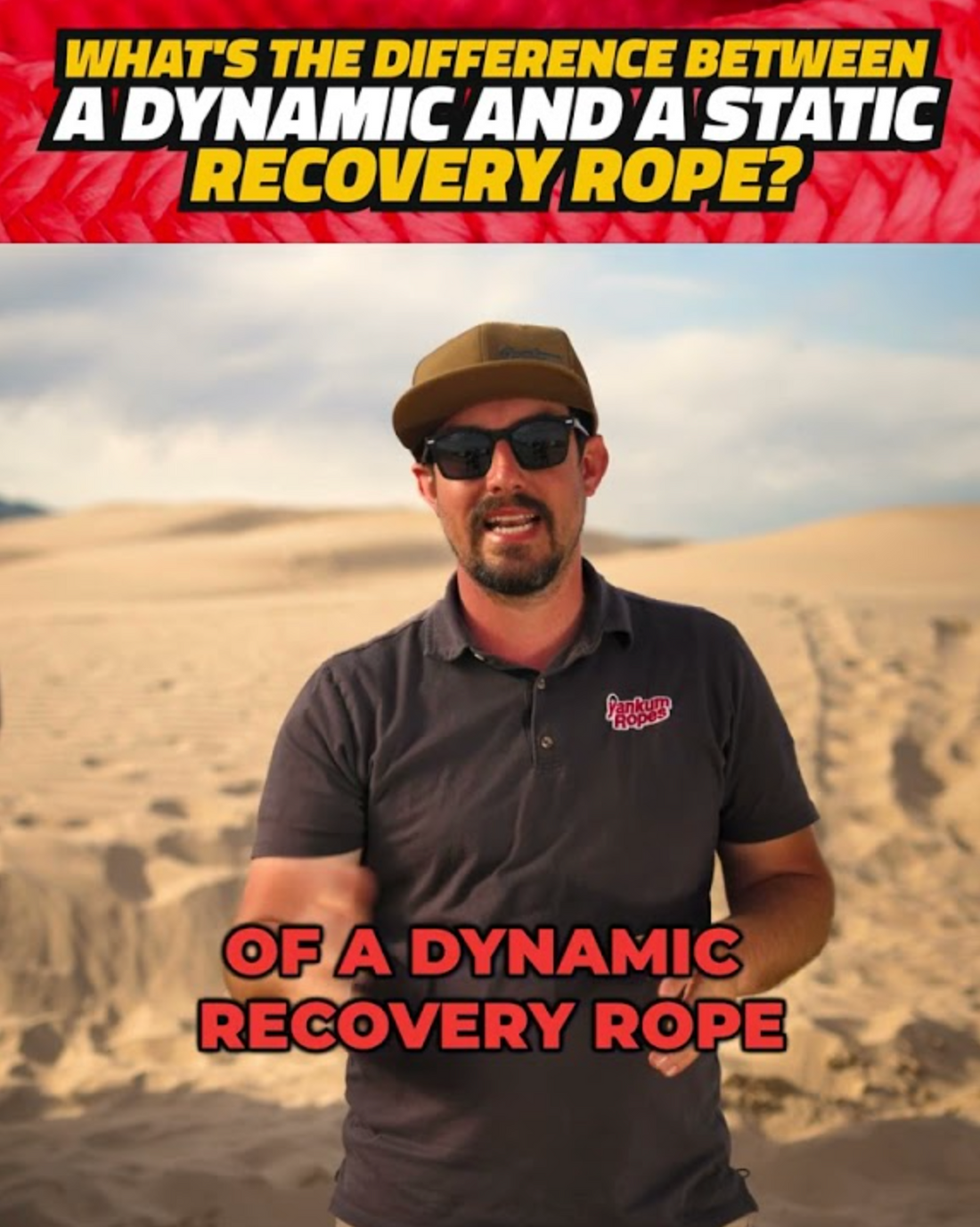
What's the Difference Between a Dynamic and a Static Recovery Rope?
Share
When it comes to off-road adventures, recovery gear is essential. Among the most important tools are recovery ropes, but not all ropes are created equal. Two main types are dynamic and static recovery ropes. So, what's the difference, and which one should you choose? Let's break it down.
Dynamic Recovery Ropes: The Power of Stretch
Dynamic recovery ropes, like our Yankum ropes, are designed with a crucial feature: stretch. This elasticity allows the rope to store energy as it stretches and then release it, providing a smooth yet powerful pull.

Why is this important?
- Reduced Shock Load: The stretch in a dynamic rope minimizes the shock load on both the stuck and recovering vehicles. This makes the recovery process not only safer but also more efficient.
- Smoother Recoveries: The elasticity of these ropes ensures that the recovery process is gradual, reducing the risk of damage to both vehicles involved.
Dynamic recovery ropes are particularly effective in off-road recovery situations where the terrain is unpredictable, and the vehicles may be deeply stuck.
Static Recovery Ropes: Strength Without Flexibility
On the other hand, static recovery ropes, chains, and flat straps are more rigid. They don't stretch, which means they provide a strong and immediate pull.

Pros and Cons of Static Ropes:
- Immediate Pull: The rigidity of static ropes delivers an instant pull, which can be advantageous in some towing situations.
- Increased Risk of Damage: However, the lack of stretch can create a sudden jolt, which may increase the risk of damage to both vehicles during recovery.
- Best for Towing: Chains and flat straps are more commonly used for towing rather than recovery. They are durable and strong but lack the shock-absorbing benefits that dynamic ropes provide.
Which Rope Should You Choose?
When it comes to recovery, especially in off-road conditions, a dynamic recovery rope or kinetic rope is your best option. The stretch and energy stored in these ropes ensure that recoveries are safe, smooth, and effective.

For towing and situations that require a static pull, chains or flat straps can be useful. However, it's essential to be mindful of their limitations and the potential for increased vehicle damage.


